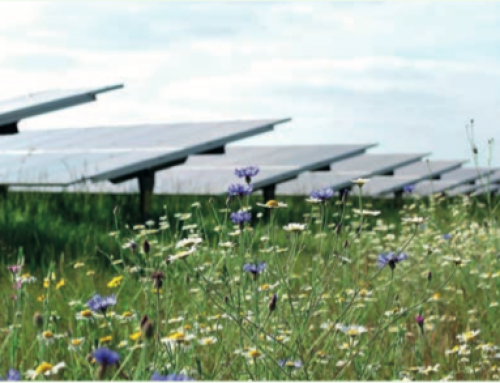Earlier this week (30June 2016), NextEnergy Solar Fund ltd reported on the financial year to 31 March 2016. The news was somewhat mixed. The 6.31p dividend forecast for the year ending 31 March 2017 was an improvement on the 6.25p paid this year. But this was off-set by a decline in the share price from103.3 p to 98.5p over the year, mainly due to a reduction in the valuation of the Company’s assets following the decline in the electricity price and the removal of LECs during the July 2016 Budget.
It is worth noting that Next Energy Solar Fund is the largest renewable energy fund listed on the London Stock Exchange, with installed solar capacity in operation of some 414 MW from 33 Solar photovoltaic plants. 414 MW is the equivalent of a good-sized power station. But how should the additional environmental benefits of solar be evaluated? According to the company, the electricity generated by their portfolio is equivalent to an annual saving of 104,179 tonnes of carbon emissions and sufficient to power some 57,000 households for a year. This is roughly equivalent to powering a city the size of Oxford for an entire year and fits well with the conclusions of the Paris meeting.
In a sense, NextEnergy are working with the grain. Renewables are playing a steadily increasing part in our generation mix. As the Department of Energy and Climate Change (DECC) has reported, at the end of 2015 energy from renewables represented 27 per cent of all electricity generation in the UK (2014 22 per cent). Solar PV represented some 10 per cent of the total, reflecting a growth in installed solar capacity to 9,519 MW (2014: 8,023 MW). The company believes that Brexit will have limited, if any, impact on British climate change policies or the regulation of the sector: the Company believes that “regulatory risk in the UK continues to be lower relative to other geographical markets.”
For the future, the Company states that it will “continue to grow its portfolio by predominantly acquiring operating solar plants constructed under the ROC regime”. There is a finite limit to the number of solar installations which can benefit from ROCs since newly constructed solar projects will not be eligible to receive ROCs for the energy they generate after the end of the ROC regime on 1 April 2017. That would seem to suggest some uncertainty in the longer term. But there is bound to be some sort of follow-on system, perhaps based on contracts for difference. And what is more, the Company also believes that solar projects have a generic advantage over other renewables ; “solar power projects have significantly less operating and financial risk than other renewable energy technologies”- a positive element for the future.



